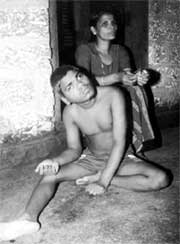Deadly design
 I WILL respond only to the few substantive issues raised by S K Handa and E V V Bhaskara Rao. I do not wish to say anything about the strong words they have used to discredit our work. But it is not surprising. I find, in particular, Indian scientists very prone to dismiss the work of others by simply saying, "who are you? We are the experts. What do you know?"
I WILL respond only to the few substantive issues raised by S K Handa and E V V Bhaskara Rao. I do not wish to say anything about the strong words they have used to discredit our work. But it is not surprising. I find, in particular, Indian scientists very prone to dismiss the work of others by simply saying, "who are you? We are the experts. What do you know?"
Handa says that our information "is inaccurate and misleading". He gives only one reason. He argues that our basic analytical method is wrong. Why? He says, this is because we treated the extracted samples with concentrated sulphuric acid, which, he claims, would have distorted results. This is his only substantive criticism of our study, because of which he concludes so strongly that the study "is questionable and contradictory".
Firstly, we did not use sulphuric acid on any extracted sample, except for milk. Therefore, even if we accept Handa's contention, where is the problem? We followed rigorous analytical procedures laid down by the US Environment Protection Agency (USEPA) in its manual for standards, sampling, extraction and estimation. Secondly, we do not accept that the use of sulphuric acid in milk would distort our results. There are many scientific references to show that the resultant chemical changes, would be conversion of alpha to beta isomer of endosulfan, and not diol, as Handa mentions.
There is no other criticism Handa has of our work. Instead his entire article then goes on to defend endosulfan. This is truly amazing. Handa, with his experience, must surely know that endosulfan is among the 40 pesticides whose residues in agro exports are banned in most countries. The USEPA has classified endosulfan as highly hazardous. Yes, the World Health Organisation does classify it as moderately toxic but with emerging science about its toxicity, there is growing pressure to change this classification. It is well understood that the pesticide is easily absorbed by the stomach, lungs and through the skin. The USEPA recommends that the amount of endosulfan in waterbodies should not be more than 74 parts per billion (ppb). Depending on the type of the food products, it recommends that no more than 0.01 to 2.0 parts per million (ppm) of endosulfan residue is safe. In Padre, in comparison, we found 30-50 ppm endosulfan residue in food.
The advocates of this deadly pesticide might not know that in this March, Columbia banned the importation, fabrication, commercialisation and use of formulated products with endosulfan mixtures. In Benin, 37 people were reported to have died because of endosulfan use in cotton fields. The pesticide is also banned or severely restricted in countries like Canada, Denmark, Sweden, Belize, Singapore, Kuwait, UK, Philippines, Russia, Sri Lanka and Thailand.
The third issue that both, Handa and Bhaskara Rao, raise is how can we say that endosulfan is responsible for what they call "strange diseases" in Padre. They say endosulfan is "not carcinogenic, mutagenic, nor does it cause allergies." Perhaps they have not been able to keep abreast of the emerging scientific evidence that endosulfan is highly toxic. Not only is there documented evidence that it has chronic toxicity, but also that it has effects on reproductive health. It is even found to have teratogenic effects - causing malformations in foetuses. Evidence also suggests that exposure to endosulfan may cause mutagenic effects in humans if exposure is high enough. Furthermore, changes induced in the cells by a mutagen can cause cancer, while damage to the egg and sperm can lead to adverse reproductive and developmental outcomes.
I can give more details. But it should suffice to say that there is enough prima facie evidence that something is desperately wrong in Padre. We found high levels of endosulfan residues, we know spraying takes place in dense inhabited areas. These people live virtually in the plantations. We are talking about spraying a pesticide inside their homes, poisoning their soil and waterbodies. We also know that endosulfan is a poison - however benign Handa and Co would like us to believe it is. I would have thought that this was enough for scientists to seek further investigation, not to negate the obvious. But then, am I asking for too much?
Related Content
- Graded Response Action Plan to control air pollution in Delhi-NCR in ‘Very poor’ and ‘Severe’ categories comes into effect from October 17, 2017- says EPCA
- Cocktail of drugs could prevent 10,000 HIV deaths a year, claim scientists
- Samarco dam failed due to poor drainage and design: investigation
- Cloaked contact grids on solar cells by coordinate transformations: designs and prototypes
- The cost of caring for Europe's elderly nuclear plants
- Delhi tops the country in fatal road accidents and in number of pedestrians and cyclists falling victim, says new CSE assessment
